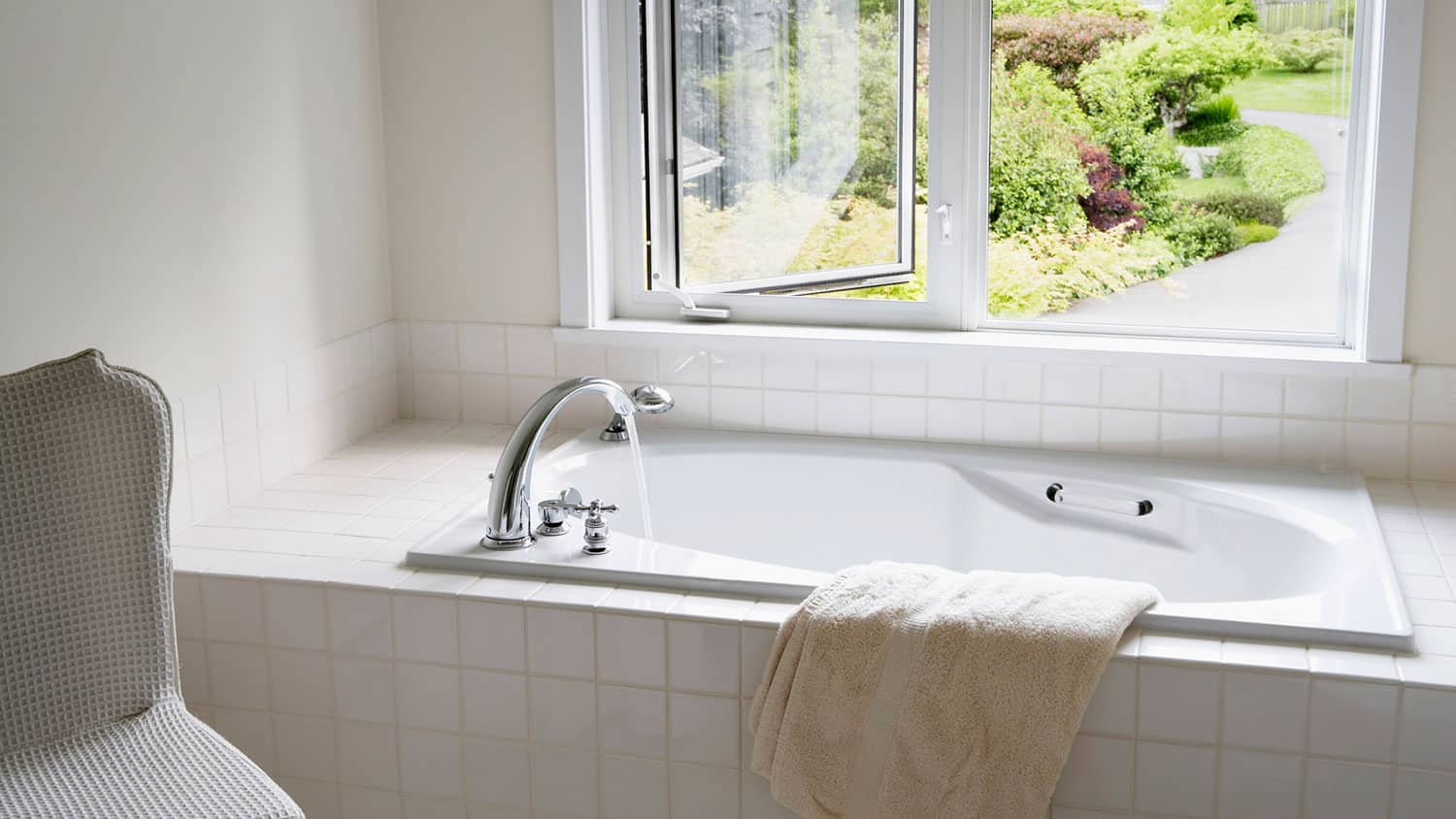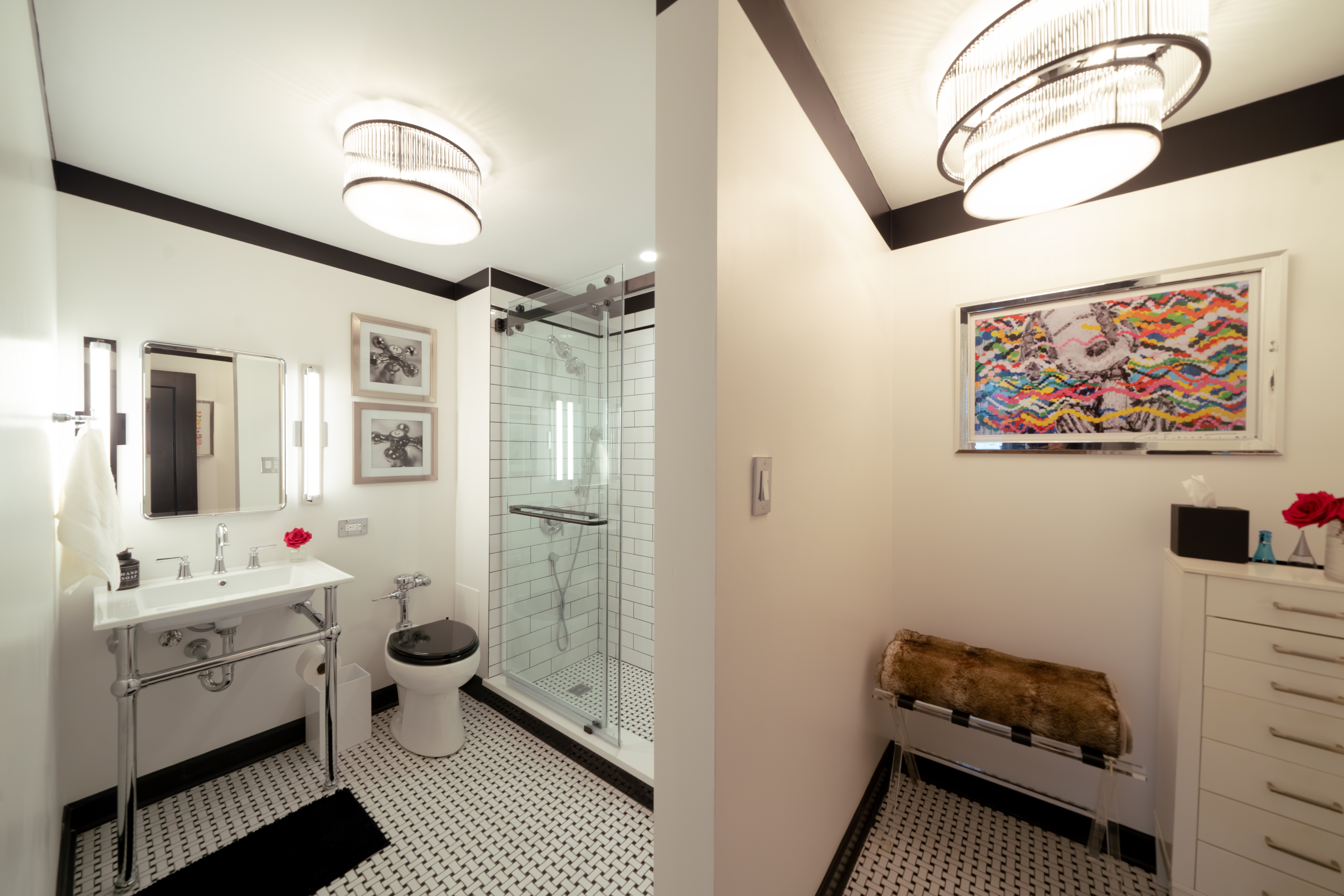
Remodeling your bathroom can add significant value to your home. Your bathroom remodel cost in Columbus, OH will depend on size, fixtures, materials, labor, and other factors.
Refresh the caulk on your bathtub for a watertight seal


Is discolored or cracked caulk marring your otherwise beautiful bathroom? If the caulk around your tub is overdue for a refresh, there’s an easy fix. Break out the caulk gun and get to work. In just a few hours, your bathtub—and bathroom as a whole—will look new again.
Before caulking your bathtub, drape a rag over the bottom of the tub to protect it from scratches and caulk residue. Make sure it’s large enough to cover the entire length of the tub or use multiple rags if needed. It’s important to take this simple step because it ensures that cleaning up is much easier.

Take the razor blade and scrape the old caulking from your tub. Keep your blade at a low angle as you scrape to avoid scratching your tub. Be thorough so you completely remove the old caulking. If there is any old caulk left, it will prevent the new caulking from sticking properly.
Use a scouring pad and scrub to clean the remaining caulk residue. Then dampen a rag with mineral spirits and run it over the gap for a deeper clean. The mineral spirits help remove the rest of the caulk residue to prepare it for new caulking. Let the surface of the gap dry using paper towels or a hairdryer.
To ensure your caulking is neat, take painter’s tape and lay it in parallel lines. As you lay the tape, leave an opening that is about 1/4-inch wide. By laying down painter’s tape you’ll be able to keep your caulking uniform and the surface of the tub clean.

The best caulk to use around a bathtub is a waterproof, silicone option. When it comes to knowing how to apply caulk, you just need some patience and attention to detail. Place your caulk into the caulk gun, then cut the tip of the nozzle on the caulk to match the width of the gap between the painter’s tape.
Place the gun to the gap at a 45-degree angle and push out the bead of caulk with steady pressure and speed. Move the caulk gun along the gap until you run it along the entire length of the gap.
With a clean rag, push in the caulk and smooth it out and remove the extra caulk from the gap. As you do this, press the caulking into the gap. Once you’re done, carefully remove the painter’s tape, avoiding the caulking as you pull it off.

Caulking needs at least 24 hours to completely dry, so avoid using your tub to keep it from getting wet. If your tub is the only place to take a bath, use the tub beforehand, let it dry, and caulk your tub afterward.
Caulking your bathtub is a straightforward task, but it does require you to be comfortable using tools like a razor scraper or a caulk gun. If you’re unsure about whether you can DIY your next caulking job to your desired results, you can always have a professional do it.
For handy homeowners, the supplies for a DIY bathtub caulking costs about $21. If you’re more comfortable having a professional do it instead, it costs about $20 to $25 per hour to hire a handyperson.
From average costs to expert advice, get all the answers you need to get your job done.

Remodeling your bathroom can add significant value to your home. Your bathroom remodel cost in Columbus, OH will depend on size, fixtures, materials, labor, and other factors.

Accessory dwelling units can be a smart investment, but your ADU cost will depend on the size, type, and materials you choose. Here’s how it breaks down.

Finishing an attic can make a great addition to your home. This guide breaks down the cost to finish an attic, including labor, materials, and more.

This handy guide will walk you through 17 types of bathroom sinks to help you decide on the best one for your bathroom remodel.

Adding kitchen cabinets to your ceiling is a budget-friendly way to increase your storage space and make your kitchen look more attractive.

An outdated bathroom is transformed into a vintage-inspired space with basketweave floor tile, a console sink, and subway tile.